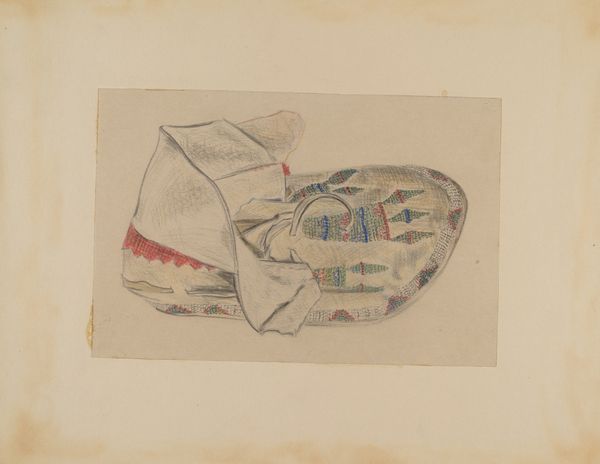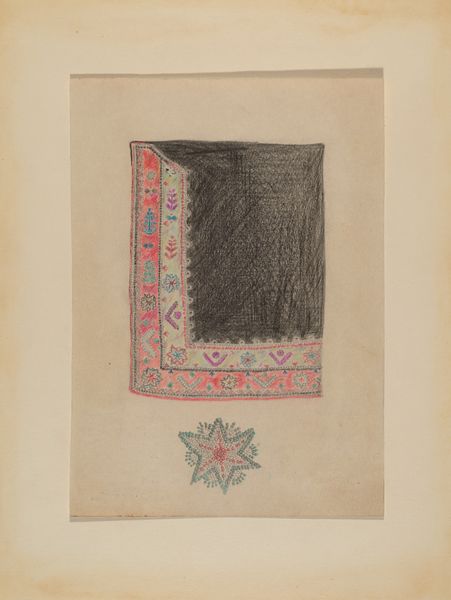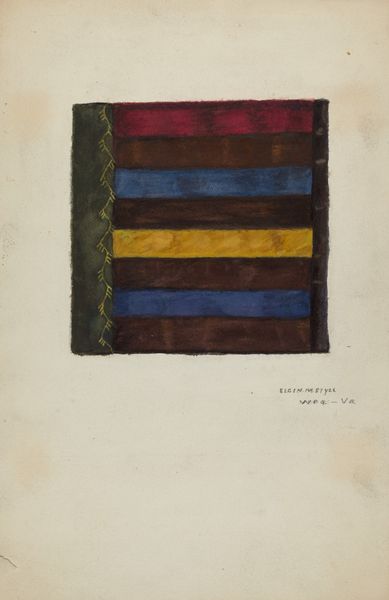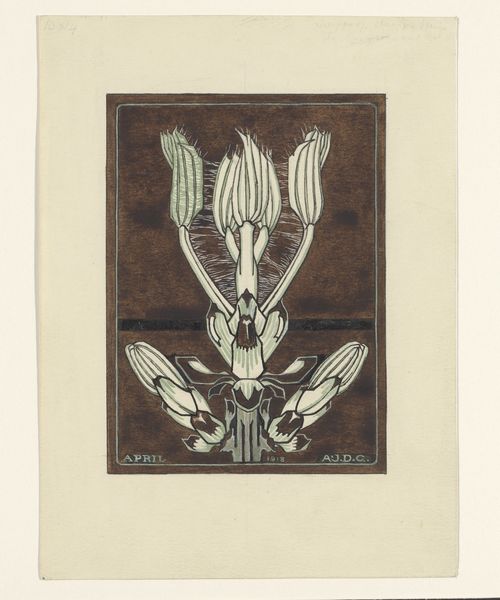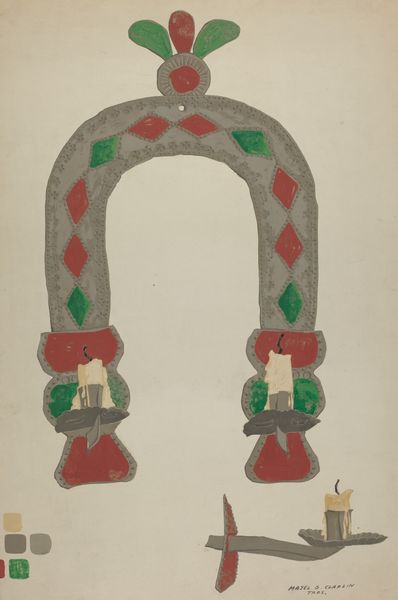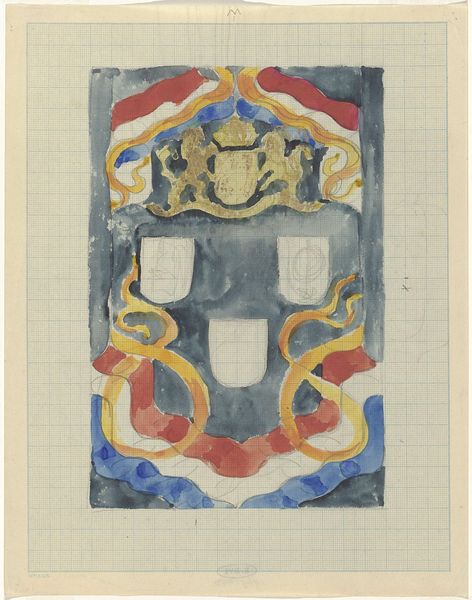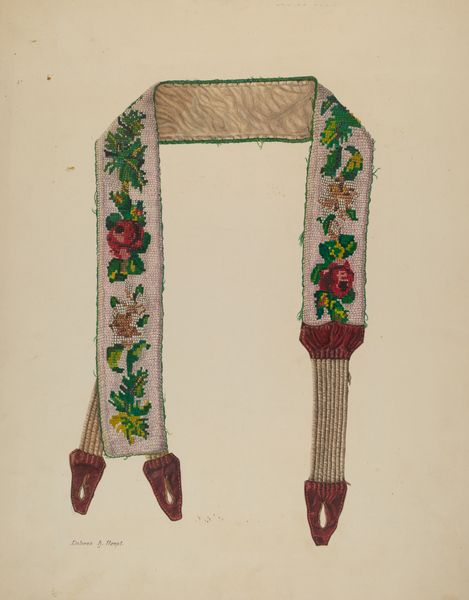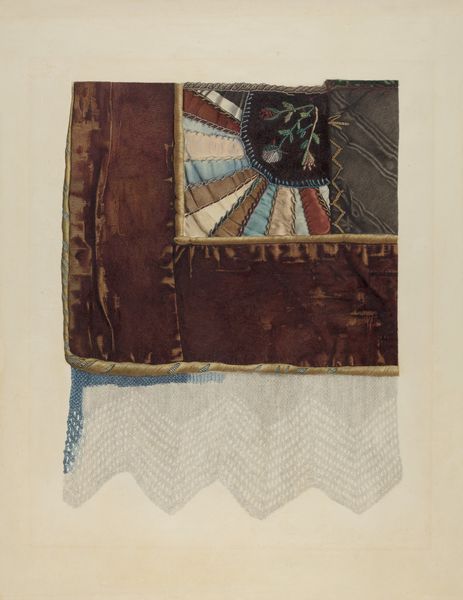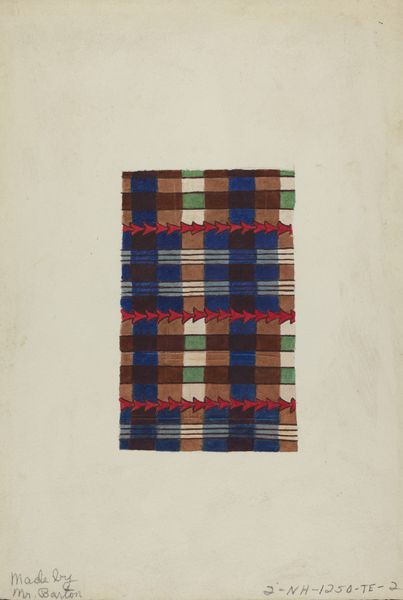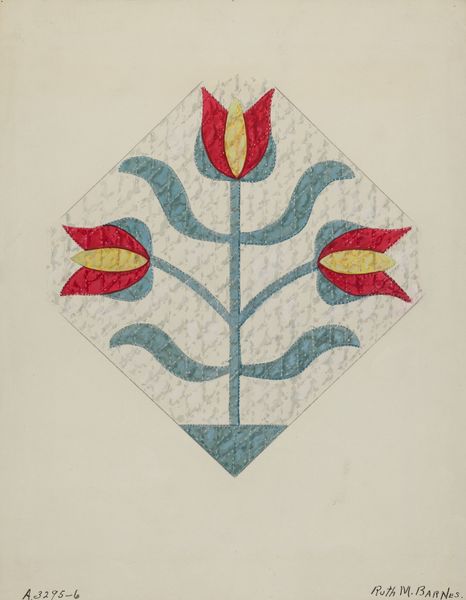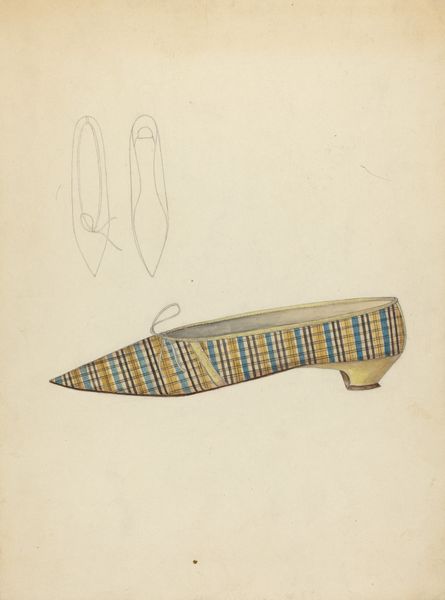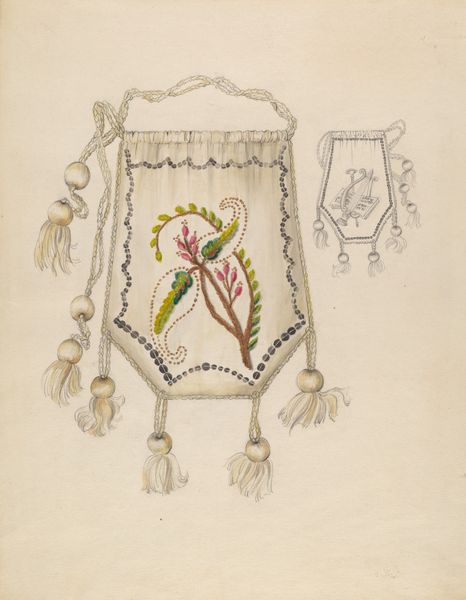
drawing, coloured-pencil, paper
#
drawing
#
coloured-pencil
#
figuration
#
paper
#
coloured pencil
Dimensions: overall: 16.3 x 9.2 cm (6 7/16 x 3 5/8 in.)
Copyright: National Gallery of Art: CC0 1.0
Editor: Here we have "Moccasin Beadwork," a coloured pencil drawing made sometime between 1935 and 1942 by Melita Hofmann. I’m struck by how precisely the geometric patterns are rendered. What should we be paying attention to? Curator: I find it interesting to think about what this drawing represents. It gives us a glimpse into the labor and materiality involved in crafting these objects within Indigenous communities. Consider the economic and social implications of producing beadwork during this period, as well as Hofmann's own relationship to the process. What do you notice about the colored pencils themselves? Editor: Well, the rendering is quite meticulous, but the pencils themselves…they look like standard, mass-produced pencils. Is the use of this everyday material significant? Curator: Exactly. The drawing mediates between traditional Indigenous artistry and the modern, industrialized world. By using common coloured pencils, Hofmann flattens the distinction between 'high art' and 'craft,' prompting us to contemplate the means of production. How does this impact your understanding of its artistic value? Editor: I see, it's not just about the final image but the context of how it was created and its relationship to indigenous material culture. It almost seems like Hofmann is documenting and elevating the artistry through the very act of reproducing it. Curator: Precisely! Furthermore, think about the commodification of Indigenous crafts and how this drawing, made with commercially available pencils, fits into the larger narrative of cultural exchange and economic exploitation. It’s more than just folk art. Editor: That really opens up the conversation. I hadn't considered the complex layers of production and cultural exchange at play. Curator: It shows how the materials used, and the social conditions surrounding the artwork's creation, are key to understanding its deeper meaning.
Comments
No comments
Be the first to comment and join the conversation on the ultimate creative platform.
